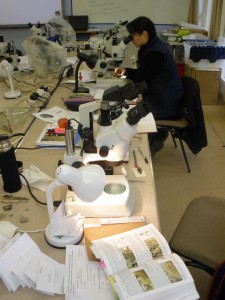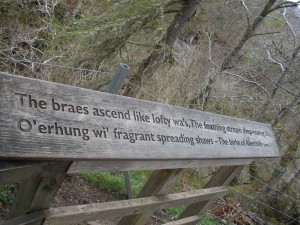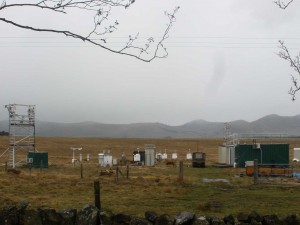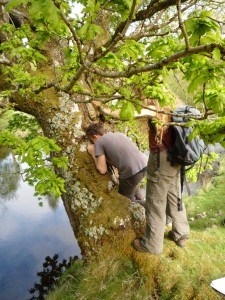
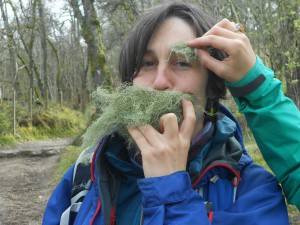 It’s official, I LOVE lichens!
It’s official, I LOVE lichens!
This month open spectaclarly with nine whole days in the southern Cairngorms learning about all things lichens at the beautiful FSC Kindrogan estate (where lichens literally drip from the trees), and finished in fine form learning how to identify trees in summer and winter at the stunning FSC Rhyd-y-creuau centre in North Wales.
Sandwiched in between I have been cycling, train-ing and bus-ing it about the eastern Central belt of Scotland surveying trees near the Automatic Urban & Rural Network (AURN) of air pollution monitoring stations. Along the way I have spoken to a wide range of people – which included those brave enough to come and ask me what I’m doing and often I’ve chatted to slightly bemused police and council workers, as many of my survey sites are situated near or on land owned by the local council, or in police grounds! It’s great to be out on the streets talking to the public about lichens and their role as air quality indicators – I’ve even had several members of the public take up my offer of using my hand lens to get a closer look at some of their local lichens!

The ‘Stump lichen’ Photo courtesy of Håkon Holien
My training course at Kindrogan was a core part of my traineeship in developing an expertise in lichen taxonomy – Being taught by one of the top lichenologists in the UK, I got brilliant first hand training in field survey skills, learning common lichens, basic morphological characters, microscope use, lichen chemistry, key-ing out lichens in the lab. We also explored some of the ecological and evolutionary forces that shape the natural world’s diversity and were given some very comprehensive resource materials. Despite the somewhat chilly weather we had incredible trips out where I got a taste of what Scotland really has to offer in terms of lichen biodiversity – Of the 2,000 lichens found in the UK, 1,500 are found in Scotland! We explored riverside habitats, graveyards, tree stump habitats (where we found the glorious ‘stump lichen’, montane rock habitats, pinewoods, rock overhangs and The Birks of Aberfeldy – a stunning woodland with an incredible array of smooth bark lichen communities where we even Robert Burns was inspired to write about the lichens!
It was brilliant to apply all this newly developed knowledge to my next round of surveying AURN sites which included the amazing Auchencorth Moss which is run by the Centre for Hydrology and Ecology (CEH).. Through my traineeship I have had the chance to build connections with CEH, and have surveyed two of their main sites. Auchencorth Moss is classified as a ‘background’ monitoring site for the UK in terms of atmospheric trace gases and aerosols and is an ombrotrophic (its soil and vegetation receives all of its water and nutrients from precipitation, rather than from streams or springs) peatland with an extensive fetch (when it’s windy it’s very windy as there is nothing nearby to buffer it) and is categorised as a transitional lowland raised bog. We had to visit twice because the weather was so rough on our first visit, but they seem to like us visiting as they even wrote a article about it! (click here)
The month finished on a high, at FSC Rhyd-y-creuau developing my skills further in tree identification – an essential tool for surveying epiphytic lichens (those that grow on trees), as lichen colonisation is dramatically effected by the pH of the bark, and different trees have very different bark pH. It was also a fantastic opportunity to put my newly aquired lichen knowledge into practise as we got up close to various different trees in the lichen rich clean air of Snowdonia, North Wales.
All in all an amazing month of exploring, learning and sharing – I just can’t wait to get out there and enthuse some more people!

